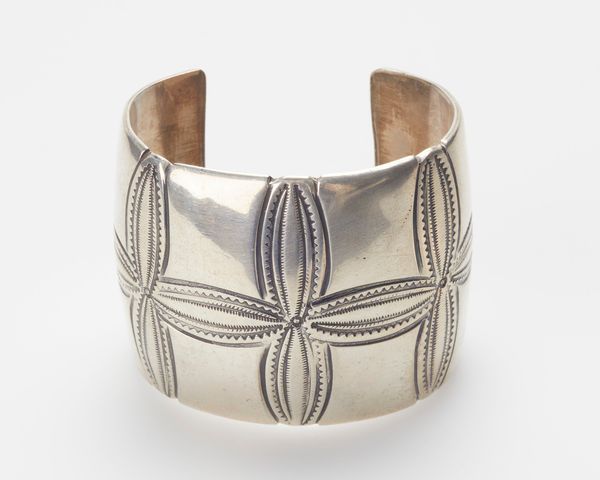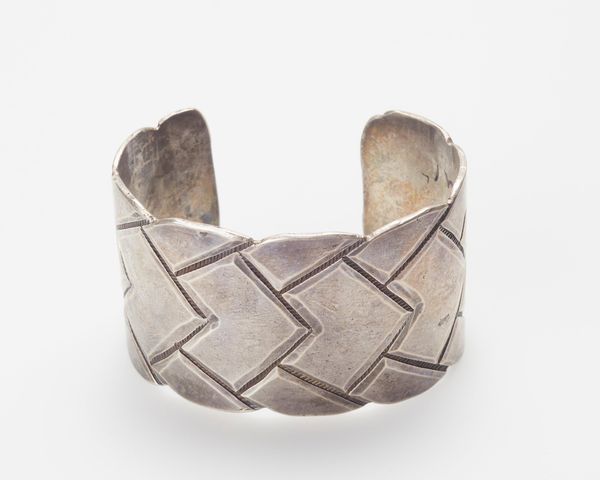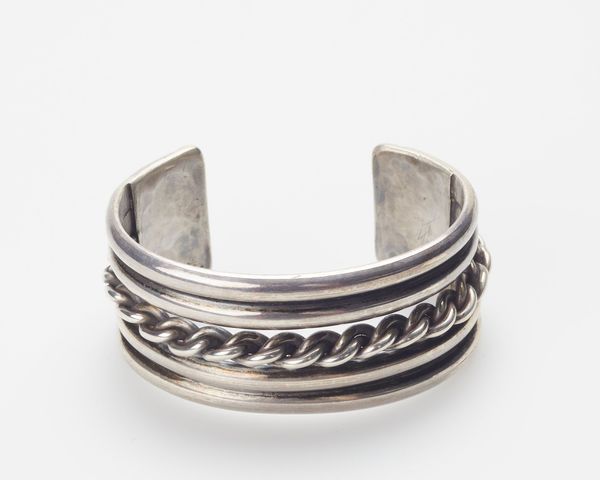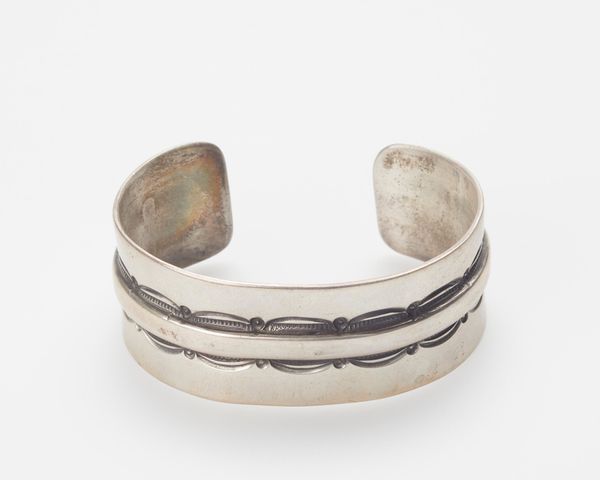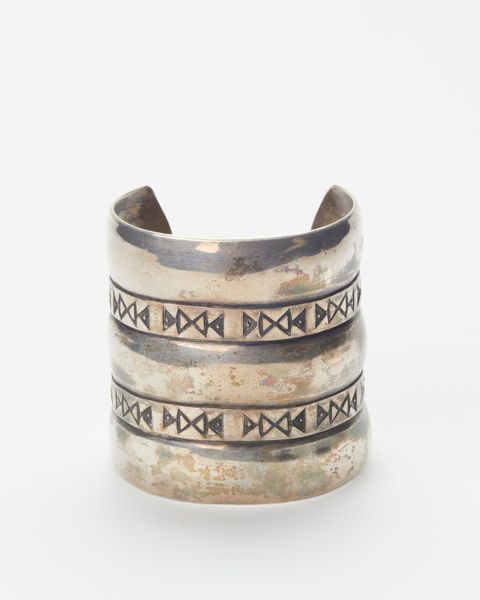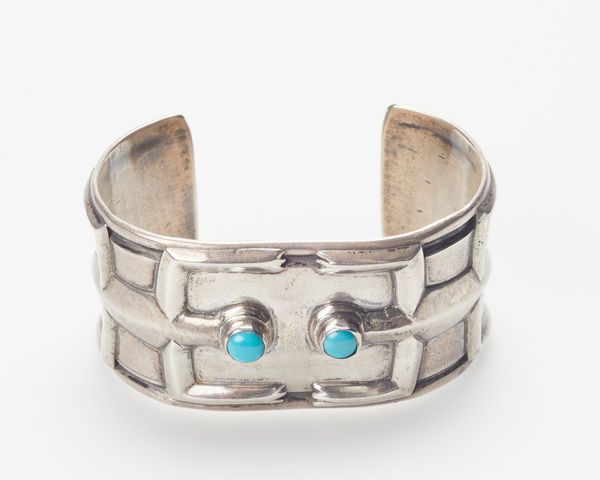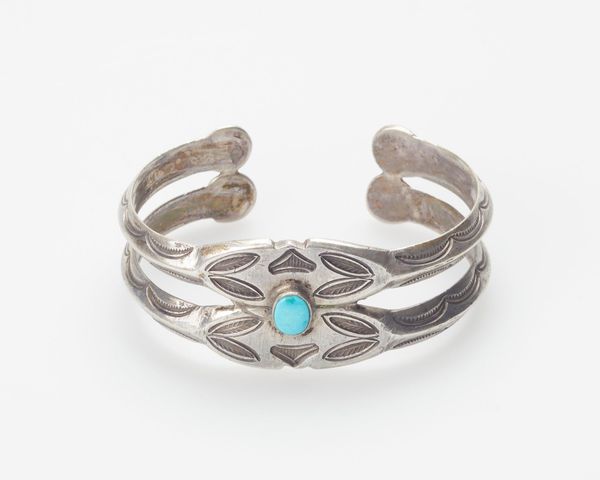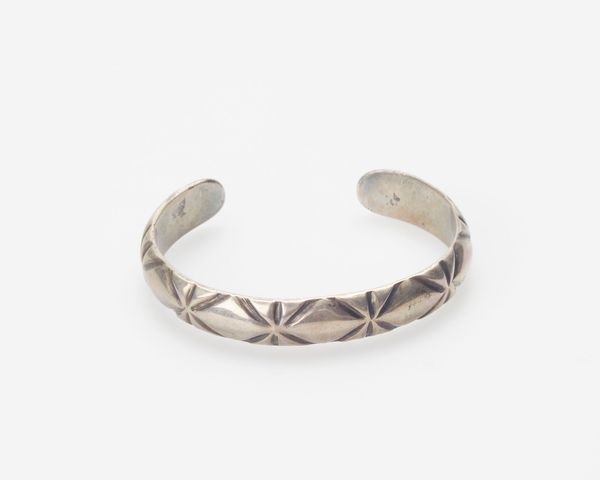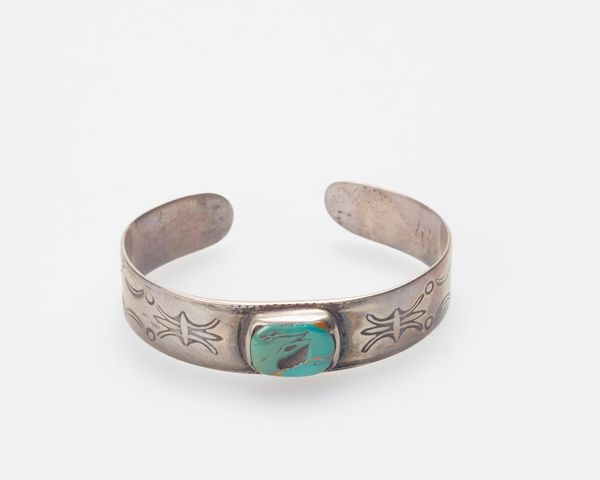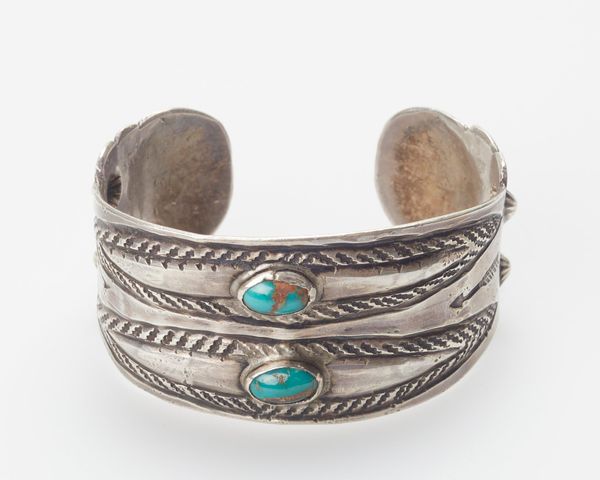
silver, metal
#
silver
#
metal
#
geometric
#
indigenous-americas
Dimensions: 2 1/2 x 1 1/2 x 1 1/2 in. (6.35 x 3.81 x 3.81 cm)
Copyright: Public Domain
Curator: Here we have a silver bracelet crafted by a Navajo artist, sometime in the 1940s. The geometric patterns and hand-wrought nature give it a powerful presence, don't you think? Editor: Absolutely. It feels stark, almost severe in its simplicity. The unadorned silver, those etched chevrons—there’s a restrained power here that speaks to something beyond pure decoration. Curator: The symbols themselves carry a wealth of meaning. Notice how the repeating triangle motifs, arranged as chevrons, might evoke arrows or even stylized mountains in the Navajo landscape. They become part of a cultural narrative. Editor: Yes, and those arrows point in opposite directions, creating a visual tension, a kind of pull and push. In the context of the 1940s, post-Depression and pre-Civil Rights, I can't help but consider this piece as a reflection on the push-and-pull dynamics experienced by indigenous communities in the Southwest. Their resilience becomes apparent. Curator: Indeed, the imagery in Navajo art is very frequently connected to spirituality and the natural world. These abstracted shapes are so precise, so intentionally placed. It evokes a connection to traditional weaving designs. I feel the bracelet channels an echo of ancient ways, an honoring of skill and time. Editor: And consider the form itself. Bracelets function not just as adornment but also, historically, as markers of identity, of belonging. This piece silently affirms a cultural presence, in a world that often attempted to erase it. This bracelet makes statements without speaking. Curator: It is striking how a small-scale personal object encapsulates such profound, large-scale ideas about place, identity, and history. I feel this unassuming form has more symbolic depth than it may outwardly appear to possess. Editor: I agree. I am now deeply interested in its relationship with both cultural memory and sociopolitical statement-making. It's a powerful testament.
Comments
No comments
Be the first to comment and join the conversation on the ultimate creative platform.


